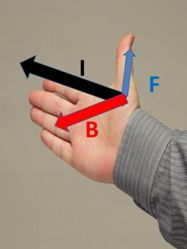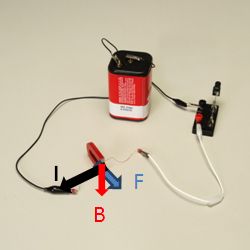My Cart
Your Shopping Cart is currently empty. Use Quick Order or Search to quickly add items to your order!
Emmette Cox
Product Management Coordinator for Physical Science
Updated March 2018
Electricity and magnetism are often mentioned together. Most people have heard of the electromagnetic spectrum, which includes radio waves, microwaves, x-rays, and visible light. Electricity and magnetism are mentioned together so often they must be related, but how exactly do they work together? How are they connected? How can their relationship be used to make beneficial technology?
There are many ways to investigate the relationship between electricity and magnetism. Some involve sophisticated equipment or mathematics. This quick activity demonstrates an important relationship between electricity and magnetism that was discovered almost 200 years ago: electricity and magnetism can work together to generate a physical force that can move objects.
Although the phenomena of electricity and magnetism had been known for years, it was not until the early 1800s that scientists made the connection that the 2 were related. One of the earliest pieces of evidence was discovered by Danish physicist Hans Oersted, who observed that a compass needle could be deflected when the current in a nearby wire was switched on. Almost 10 years later Michael Faraday made additional observations about the relationship between magnetism and electricity.
Faraday had little formal training and was mostly self-taught; however, many scientists (including Albert Einstein and James Maxwell) recognized his scientific contributions. As a bookbinder, Faraday was able to read a lot, allowing him to become self-taught on many topics. Additionally, he attended lectures of the Royal Institution, a British organization dedicated to science. Faraday wrote to lecturing scientist Humphry Davy and sent him a book based on notes Faraday had taken during Davy's lectures. This relationship eventually earned Faraday a position as Davy's assistant, which led to Faraday conducting his own experiments in electricity and magnetism.
In one of his most famous experiments, Faraday discovered that if a magnet was moved near a coil of wire, a current began to flow in the wire. An electric current consists of charged particles called electrons that can move through a wire like water flowing through a pipe. The current would flow in the wire if the magnet moved near the coil or if the coil was moved near the magnet. This phenomenon became known as induction. This is the basic principle on which electric motors and generators operate.
So how do electricity, magnetism, and force all relate? A complete lesson on the interaction of electricity and magnetism involves field vectors and lots of math, but a simple, practical demonstration of how electricity and magnetism work together can be explained with what is known as the right hand rule.
Hold your right hand flat with your fingers together and your thumb extended. Your thumb is the direction of force (F), your fingers are the direction of positive current (I), and your palm points in the direction of the magnetic field (B). See figure 1. Note: When a current moves through a wire, it is the movement of negative particles called electrons, but when scientists and engineers design and study circuits they imagine positive charges moving through the wires, this is called conventional current. So when using the right hand rule to point in the direction of current, point along the wire from the positive terminal of the battery to the negative terminal.

If a current (I) passes through a magnetic field that is pointing in the direction (B), then a force acts on the wire in the direction of (F). This only works if there is an angle between the current and the magnetic field. If the wire is in the same direction as the magnetic field, there will be no force on the wire. The direction of (F) has to be perpendicular to both the directions of (I) and (B).
Follow the instructions for this activity closely and abide by established laboratory safety practices, including the use of appropriate personal protective equipment (PPE) such as gloves, chemical splash goggles, and lab coats or aprons. Do not eat, drink, or chew gum while performing the lab and wash your hands before and after performing the activity. Connecting wires to batteries for a long time can cause the wires to heat, and the battery could leak or start a fire. Make sure to only connect the circuits described in this activity for a few seconds.
This quick activity will demonstrate the relationship among electrical current, magnets, and force.


When the switch is closed in step 8, the wire will jump in the direction of your thumb, slightly into or out of the magnet. When the switch is closed in step 10, the needle in the compass should move.
If the wire does not move, try a thinner piece of wire or use a new battery.
This demonstration used a single straight wire. What would happen if a loop of wire or a coil of several loops was placed in a magnetic field and a current was passed through the coil? Note: If current is passed through a coil of wire in a magnetic field, there is a force in opposite directions on opposite sides of the coil. The coil will experience a torque, or a force that turns the coil. If the coil is connected properly it will continue to turn. This is the basic principle behind an electric motor.
If a force is applied to a coil that causes it to turn while it is located inside a magnetic field, a current will be generated in the coil. This is the basic idea behind an electric generator.
Here are some other products designed for motor and generator investigations.
| Shop Electricity | Shop Magnetism |